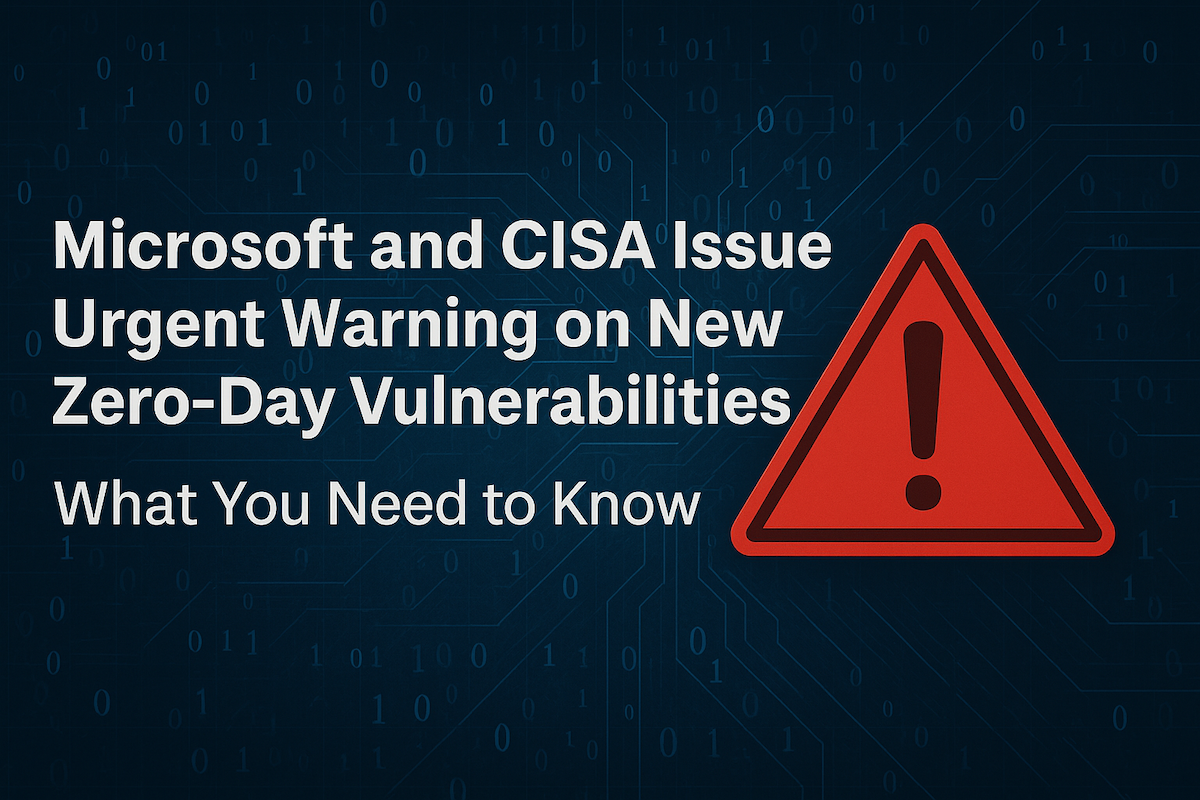
In the latest development in cybersecurity, Microsoft and the Cybersecurity and Infrastructure Security Agency (CISA) have issued an urgent warning about yet another set of zero-day vulnerabilities affecting Windows systems. These vulnerabilities, patched in the May 2025 Patch Tuesday update, have been identified as actively exploited in the wild. The potential impact is severe, with these flaws threatening the integrity of personal and organizational data.
Vulnerabilities at a Glance
The vulnerabilities in question include:
- CVE-2025-30400: A use-after-free flaw in the Windows Desktop Window Manager (DWM) Core Library that could lead to privilege escalation, potentially giving attackers SYSTEM-level access.
- CVE-2025-32701: Another use-after-free bug in the Windows Common Log File System (CLFS) driver, facilitating local privilege escalation to SYSTEM.
- CVE-2025-32706: A heap-based buffer overflow vulnerability in the CLFS driver, which similarly facilitates local privilege escalation.
- CVE-2025-30397: A type confusion vulnerability in the Microsoft Windows Scripting Engine that enables remote code execution through a specially crafted URL, making it a significant remote attack vector.
- CVE-2025-32709: A use-after-free flaw in the Windows Ancillary Function Driver for WinSock, allowing attackers to escalate privileges to administrative levels.
The presence of these vulnerabilities in the Known Exploited Vulnerabilities (KEV) catalog by CISA prompts a mandatory response from U.S. federal agencies, requiring them to install the necessary patches by a specific deadline. Nonetheless, both Microsoft and CISA recommend a wider application of these security updates across all organizations to prevent any potential exploitation that could lead to system compromise, data theft, or the installation of malware.
Mitigation and Prevention
Organizations and individuals are advised to take the following actions immediately:
- Apply the latest security updates from Microsoft immediately.
- If immediate patching is not feasible, consider vendor-specific mitigation instructions meticulously.
- Review and implement the guidance outlined under Binding Operational Directive (BOD) 22-01 for cloud services.
- As a last resort, discontinue the use of affected products if suitable mitigations cannot be applied.
In addition to patching, CISA and Microsoft encourage the use of robust monitoring and detection mechanisms, such as Antimalware Scan Interface (AMSI), Antivirus with up-to-date signatures, and Endpoint Detection and Response (EDR) solutions.
Conclusion
The persistent threat landscape underscores the importance of proactive cybersecurity measures. Given the rapid exploitation of newly disclosed vulnerabilities, the swift application of security updates is imperative to safeguard against sophisticated cyber threats.
For detailed guidance and additional resources, refer to Microsoft's official advisory and CISA's press release available online.
CISA's ongoing efforts to address these vulnerabilities and the collaboration with industry partners demonstrate a commitment to enhancing the cybersecurity posture of organizations worldwide.
